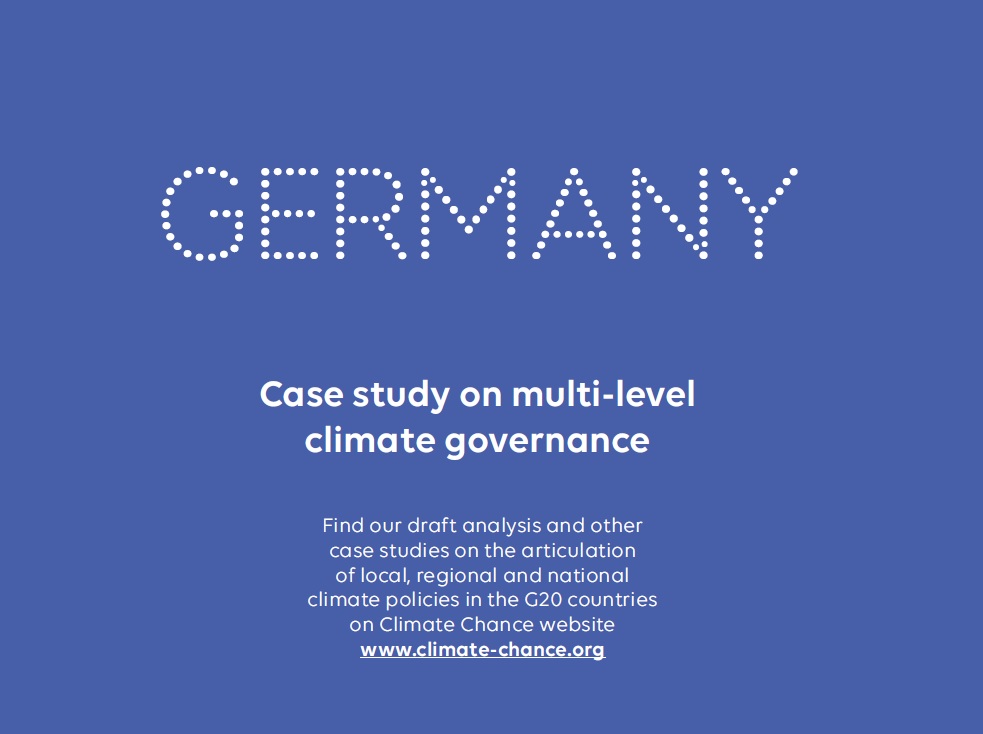Germany • Multi-level climate governance
The Climate Chance Observatory decrypts the national frameworks available to local authorities for the formulation, implementation and monitoring of their climate plans, and observes how local, regional and national climate policies are articulated in G20 countries. Here is the case study on Germany, made in collaboration with adelphi.

Introduction
Germany looks back on a tradition of independent, subnational governments that dates back to the territorially fragmented governance system of the Holy Roman Empire from the Early Middle Ages. When the empire dissolved in the early 19th century, the German confederation still consisted of a fairly large number of independent states. To catch-up with development, promote trade and industrialisation, Germany rather suffered from too little than from too much centralisation (Fuhr et al. 2018). From 1807 onwards, a series of reforms created a centralised administration, joint rules and a common market. Importantly, parallel to functional centralisation, the reforms also aimed at involving citizens in local public affairs and granting local authorities the right to local self-government – therewith laying the foundations for today’s participatory local government system. With exceptions, particularly during the Nazi dictatorship (1933-45), German regional and local governments have possessed autonomy for many centuries. Since the re-unification of East and West Germany in 1990, the Federal Republic of Germany consists of 16 partly-sovereign states (Länder) and about 11.000 local governments.
Summary
- Introduction
1.1 Administrative structure
1.2 Subnational autonomy & responsabilities
1.3 Distribution of climate and energy related competencies
1.4 Local governments budgets
1.5 Green local budgeting - Germany’s climate change policy framework
2.1 Federal climate change policies
2.2. Länder climate change politicies
2.3 Monitoring of climate change planning
2.4 Subnational climate change planning tools - Vertical coordination of climate policy and action
3.1 Coordination between federal & Länder
3.2 Coordination between Länder & local governments
3.3 Coordination between federal & local governments - Financing of local climate actions
Read our draft analysis and other case studies on multi-level climate governance in G20 countries here.


